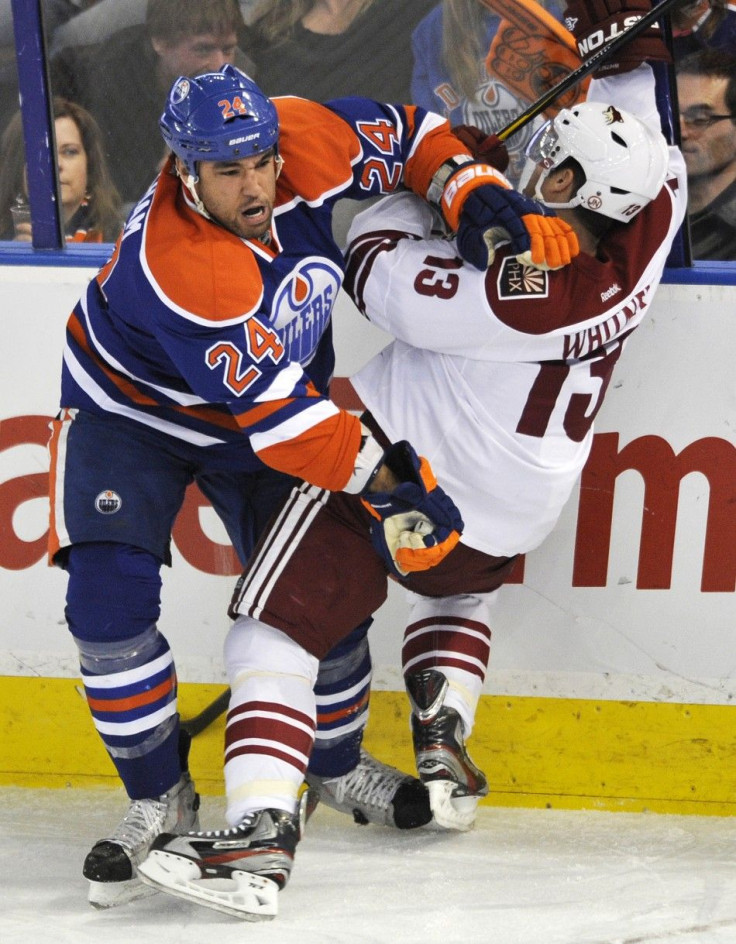The NHL's Dirty Secret: Clutch and Grab Hockey is Back

The National Hockey League has a problem, low scores, boring defense and a lack of basic respect for the rules as written.
With just under three weeks remaining in the regular season, the 30 NHL teams are on pace for the lowest scoring season since 2003, the season before the lockout.
NHL games are averaging 5.44 goals per game this season, down a half a goal per game since the league returned from the lockout for the 2005-2006 season.
One of the more stark indications of the trend is in the number of 40 goal scorers in the league. In 2005 there were 11, ten players hit the mark in each of the next two seasons, then eight in 2008, seven in 2009 and five last year. This season there are only two, Steven Stamkos and Evgeni Maklin, with just three other players over 35, Phil Kessel, Scott Hartnell and Marian Gaborik.
In the 2003-2004 season, the last season prior to the lockout, teams averaged a paltry 5.14 goals per game. During the lockout, the league changed some rules and attempted to enforce others more aggressively in an effort to increase scoring.
The league removed the red line to allow for more breakaways, added the trapezoid to prevent goaltenders from handling the puck, reduced the size of goaltender equipment, moved the blue line back, but most importantly they called for zero tolerance on hooking, holding, tripping, slashing cross-checking and interference penalties.
The last change was the most important, it was supposed to force defenders to play defense by moving their feet to get in the way of a play as opposed to just grabbing a hold of forwards as they went by. It was that change that was most important.
The plan worked, in their first year back after the stoppage, teams averaged more than six goals per game for the first time since the early 1990's. The league was praised for its new exciting brand of hockey and their television ratings and arena attendance numbers grew.
But the scoring has slipped since that high water mark, falling every year since 2005-2006.
2003-04 - 5.14 goals per game (pre-lockout)
2005-06 - 6.16 goals per game
2006-07 - 5.89 goals per game
2007-08 - 5.56 goals per game
2008-09 - 5.82 goals per game
2009-10 - 5.68 goals per game
2010-11 - 5.59 goals per game
2011-12 - 5.44 goals per game
It is a disturbing trend for a game that made major rule changes just eight years ago in an effort to increase scoring, and it is the erosion of the zero tolerance policy on so called clutch and grab defense that has led to this state of affairs.
Fans and even some members of the media are beginning to take to their blogs and twitter to decry the return of the old style of defense that stymied the game.
The greatest evidence of this, beyond watching any game played right now, is the current NHL standings. In the 2005-06 season, no team with less than 240 goals made the playoffs. The final standings were a near direct correlation to goals scored, the more you scored the higher you finished. The game was a skill players paradise.
This season less than half of the 16 teams that get in will reach the 240 goal plateau. Now the standings are a near mirror image of the goals allowed category. The New York Rangers, the top team in the Eastern Conference are on pace to allow 182 goals. If they hit that mark they will allow 30 less goals than any team in the 2005-2006 season.
Taking nothing away from Henrik Lundquist and the Rangers defense, which has been admirable this year, but it is impossible to achieve those results under the rules as called just seven years ago.
In the 2005-06 season, NHL teams combined for 39,439 penalty minutes as the clutching and grabbing was called with the zero tolerance suggested after the lockout. This season, the teams are on pace for 27,550 penalty minutes. In just seven years the game has either gotten cleaner by about 6000 two minute minors, or the officials have stopped enforcing the rules.
The NHL lost fans, television rights and untold millions by letting their game get bogged down in unwatchable defense through the late 1990's and early 2000's. The way they are trending, they need to make some changes in a hurry or they will find themselves back there in a hurry.
© Copyright IBTimes 2024. All rights reserved.





















